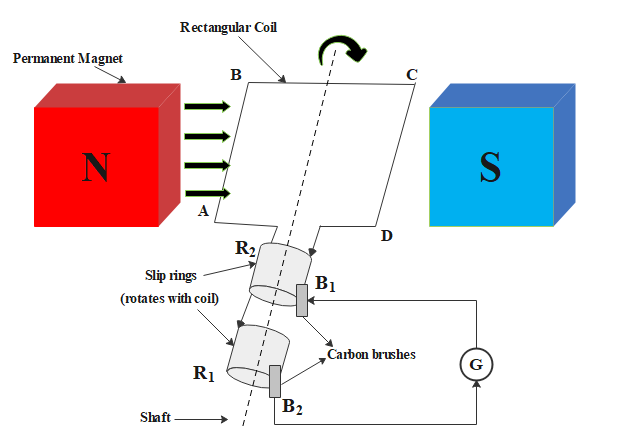Generators
An electrical generator is a
device that converts energy into electric power for use in an external circuit.
It was first prototyped by Michael Faraday in 1831. The electric generator works
through kinetic energy, also known as motion. This energy can be procured from
water turbines, wind turbines, steam turbines, and other methods.
Water turbines or hydroelectric
turbines are used to convert the kinetic energy in water into electricity. Usually,
it is done in high-falling or fast-flowing water to generate more energy. This
process is termed as hydropower.
Wind turbines are used to convert
the kinetic energy in wind into electricity. These are, on average, the most
efficient way to generate electricity. These turbines alone do not produce
much, so they are grouped in hundreds in windy areas. These are known as wind
farms.
Steam turbines are the most used
type of electricity generation. They have a reputation as a harmful source of
electricity for the Earth, although this is not so. Steam turbines harness heat
and use it to boil water. The steam obtained spins turbines to produce
electricity. This does not impact the environment by itself, rather, the way
the heat is obtained does. Heat may be obtained by burning fossil fuels, which
emits toxic gases.
In generators, the
electromagnetic property of electricity is used. When a magnet is passed through
a wire coiled into a spring, electric current is produced because the magnet
pulls the electrons in the wire.
There are two types of electrical
generators: AC and DC. AC generators produce Alternating Current. DC generators
produce Direct Current. AC current goes from neutral to positive to neutral to
negative, etc., in a cycle. DC generators, however, produce a regular current.
In the case of an AC generator, a
rotating magnet is placed between three sets of stators: A, B, and C. They are
wrapped with wire coiled in a spring. According to the electromagnetic
property, when the magnet begins rotation, current should start flowing through
the wires.
In a DC generator, you will find
components like those of an AC generator, except the magnets will be
stationary, and the wire will be moving instead. DC generators use a commutator
to provide direct current instead of alternating current.


Comments
Post a Comment